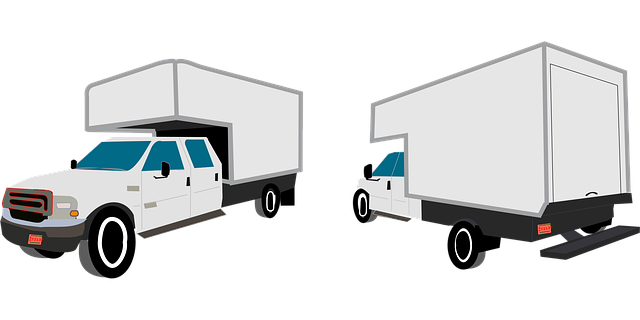Registering a car in California involves understanding specific requirements and completing a series of steps. This guide breaks down the process, ensuring you’re prepared with all necessary documents for a smooth registration. Key aspects include gathering documents for VIN verification, performing a Vehicle Identification Number (VIN) check, choosing a convenient Motor Vehicle Registry location, and paying associated fees. By following these steps, you’ll efficiently register your vehicle in California.
- Understand California Car Registration Requirements
- Gather Necessary Documents for VIN Verification
- Perform Vehicle Identification Number (VIN) Check
- Choose a California Motor Vehicle Registry Location
- Complete Car Registration Process and Pay Fees
Understand California Car Registration Requirements

Before registering your car in California, it’s crucial to understand the state’s specific requirements. Unlike some other states, California demands a rigorous process that includes both vehicle inspection and what’s known as VIN verification. This involves confirming the authenticity of your vehicle’s Vehicle Identification Number (VIN) through a trusted mobile VIN verifier or inspection service. This step is designed to prevent fraud and ensure only legitimate vehicles are registered.
During this process, you’ll also need to provide essential documentation such as proof of insurance, valid driver’s license, and possibly other identification documents. Additionally, the vehicle must meet safety and emissions standards set by the California Department of Motor Vehicles (DMV). Properly navigating these requirements is key to ensuring a smooth car registration experience in California using even mobile VIN verification services.
Gather Necessary Documents for VIN Verification

Before heading to the California Department of Motor Vehicles (DMV) to register your car, make sure you have all the essential documents ready for a seamless process. One crucial piece is proof of vehicle identification number (VIN) verification. This involves gathering important information and documentation related to your vehicle’s history. You’ll need the vehicle’s registration certificate from the state where it was last registered, along with any previous inspection reports or maintenance records.
Additionally, having a mobile vin inspection or using a mobile vin verifier can be beneficial, as these services offer convenient ways to gather and verify your car’s crucial details before visiting the DMV. This proactive approach ensures you have accurate information, making the registration process quicker and less stressful.
Perform Vehicle Identification Number (VIN) Check

Before registering your car in California, performing a Vehicle Identification Number (VIN) check is a crucial step. This process involves verifying the vehicle’s history and ensuring it meets all legal requirements. A mobile VIN verifier or inspector can be particularly handy for this task, as they provide on-site inspections, allowing you to confirm essential details like the vehicle’s age, make, model, and any previous accidents or damage.
Having a reliable mobile vin verification service ensures a smooth transition during registration. With their expertise, you can avoid potential issues and save time. These professionals use advanced technology to cross-reference the VIN with various databases, offering accurate and up-to-date information about the car’s history, which is essential for compliance with California’s vehicle registration guidelines.
Choose a California Motor Vehicle Registry Location

Choosing the right California Motor Vehicle Registry Location is a crucial step in the car registration process. There are numerous offices across the state, but some locations offer specialized services like mobile VIN verification and inspection to make the experience smoother for residents. These mobile vin verifiers provide on-site or at-home services, allowing you to complete your vehicle’s registration without leaving home. This is particularly beneficial for those with busy schedules or accessibility needs.
When selecting a location, consider proximity and convenience. Check if the chosen registry office accepts walk-in appointments for VIN verification or offers online scheduling options. Additionally, ensure they provide comprehensive services, including title transfer, license plate issuance, and any other required documents, to avoid multiple trips. By utilizing mobile vin inspection services, you can streamline these procedures, making car registration in California more efficient.
Complete Car Registration Process and Pay Fees

After ensuring your vehicle meets all necessary requirements, it’s time to complete the car registration process and pay the associated fees. This involves several crucial steps. First, you’ll need to gather essential documents such as proof of insurance, a valid driver’s license, and evidence of ownership. The California Department of Motor Vehicles (DMV) recommends using a mobile vin verifier to conduct a vin inspection and vin verification, ensuring your vehicle’s information aligns with the records. This digital process streamlines the registration and enhances accuracy.
Once your documents are in order, you can proceed to a DMV office or use their online services to submit your application. Along with paying the registration fee, you’ll also need to cover other charges like title fees and vehicle inspection costs. Properly completing these steps will result in a registered vehicle that’s ready to hit the road legally and securely.
Registering a car in California involves understanding specific requirements, gathering essential documents for VIN verification, conducting a vehicle identification number (VIN) check, selecting a convenient Motor Vehicle Registry location, and completing the registration process with associated fees. By adhering to these steps and ensuring accurate VIN verification, you can smoothly navigate the car registration process in California.
